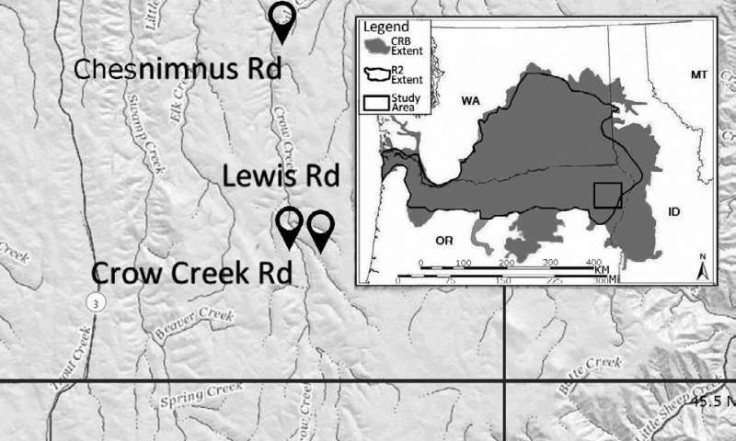Volcano Eruption From 16.5 Million Years Ago That Helped Cool Earth, Explained

Volcanic eruptions have served as cornerstones to evolution on Earth. From aiding the creation of first signs of life on Earth to the extinction of dinosaurs, volcanic eruptions constantly feature as important events in history that altered the course of planetary evolution.
Now researchers at Washington State University have determined that the Pacific Northwest was home to one of the Earth's largest known volcanic eruptions around 16.5 million years ago.
In fact, only two eruptions were larger than the one in the Pacific Northwest: the basalt flood of the Siberian Traps and the Deccan Traps.
These eruptions, a millennia-long spewing of sulfuric gas that blocked out the sun and cooled the planet, also led to large-scale extinction of life on the planet.
"These eruptions did have a global effect on temperatures, but not drastic enough to start killing things, or it did not kill enough of them to affect the fossil record," said John Wolff, a professor in the WSU School of the Environment, in a report by phys.org.
The research was funded by the National Science Foundation and published in Geology journal. It connects geological and archaeological data from across the world to connect the dots to a major, landscape changing event in our planets’ history.
The team estimated the eruption to have occurred 16.5 million years ago. Vents found in Washington and Northwest Oregon sent the flow of basalt from the eruption all the way from Canada to the Pacific Ocean.
This flow formed the Wapshilla Ridge Member of the Grande Ronde Basalt, a kilometer-thick block familiar to travelers in the Columbia Gorge and most of Eastern Washington. This is the largest basalt flood map plotted till date.
It is the largest flood basalt unit found on earth and points to the origin of the giant sulphur clouds that engulfed our planet following the eruption.
The researchers estimate that this flood released around 242 and 305 billion tons of sulphur dioxide into our atmosphere. Putting that in perspective, it is 4000 times more than the 1815 Mount Tambora eruption in present-day Indonesia. This gargantuan eruption covered Earth in a cloud of sulphur and caused food shortages all across the northern hemisphere.
Understanding the eruption that caused global cooling will provide interesting insight into climate change on Earth, say the team.
The event took place in what is known as the Miocene Climactic Optimum, or MCO. In this stage of planetary evolution, Earth was cooling for 50 million years followed by a small 5 to 6 degrees Fahrenheit increase in temperature.
There was an interesting period at the peak of the MCO period where temperatures dropped again and this period coincides with the estimations of the Wapshilla eruption. Understanding the changes in this period could give us an important frame of reference in the timeline of Earth’s evolution, in turn helping us understand current climate trends better.
© Copyright IBTimes 2024. All rights reserved.





















